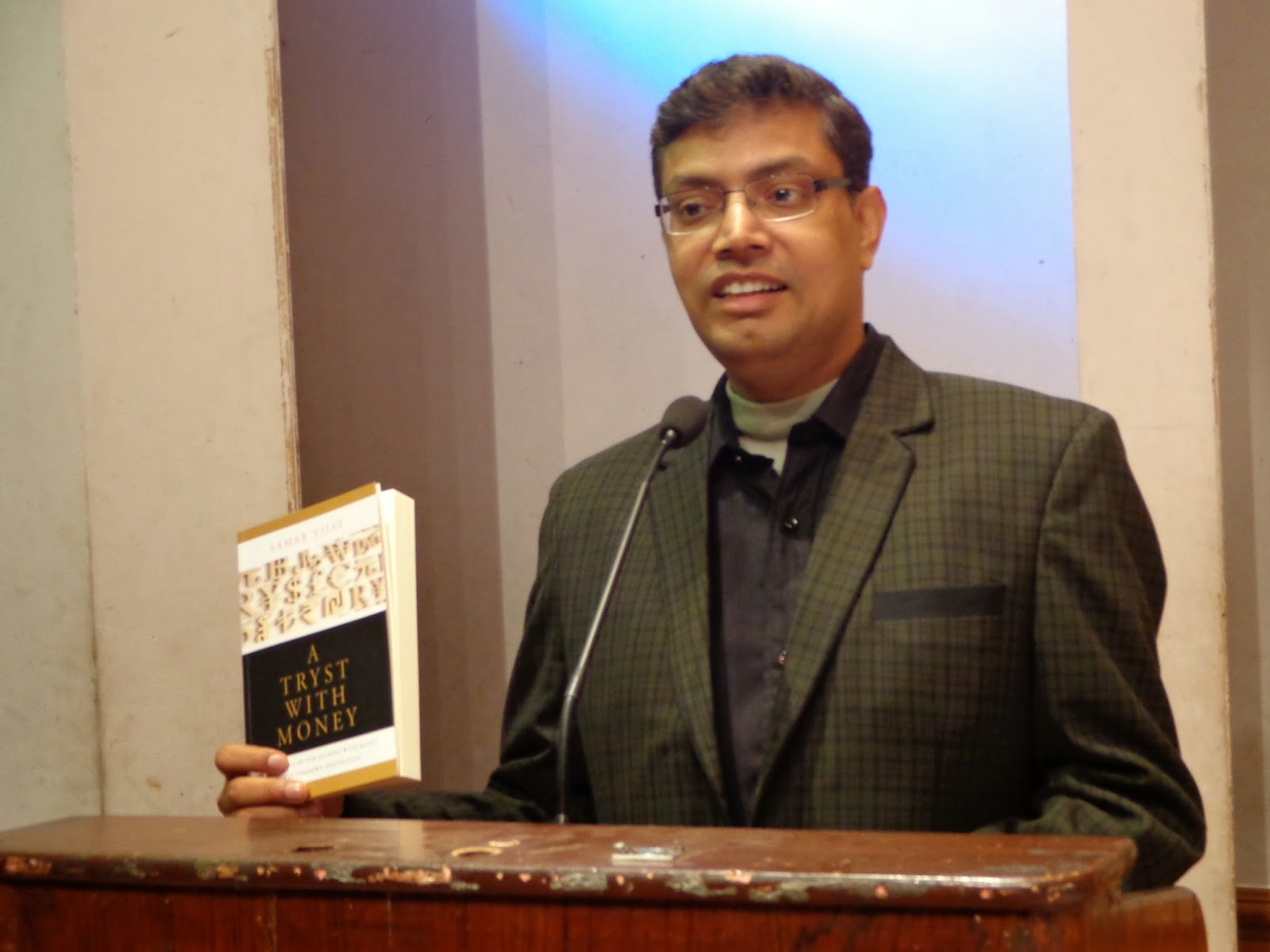Learning about Finances with Author Samar Vijay
Finance is complicated. Especially for common person, it a
subject, difficult to grasp and understand. One may go all bonkers if they have
to deal it every day. But for people dealing it every day and treating the
subject as their love, it an easy subject.
Financial Expert Samar Vijay in his
book, ‘A Tryst with Money’ explains that money matters can be a romantic endeavor
too. In an exclusive chat with Strokes of Pen, he explains his ideologies
behind the book and its concept.
Q1. Normally,
finance people are considered to be serious and practical. How did venturing
into book writing happened?
Samar: Finance as a subject itself is considered serious, as you
rightly presumed. However, it need not be as such because I personally believe
a subject that touches almost every human life should not be out of bounds. May
be seriousness around finance is a deliberate move by a few who intend to control.
This book is an effort to break the taboo. I have tried to make finance simple
for general mass and believe me most of the time consumed in writing the book
was to present the concept in a simple and readable manner.
Q2. Was publishing a novel something, you wanted since
childhood or was it a wish grown late?
Samar: I guess writing is a wish most creative people aspire to.
As avid book reader, I always preferred writers who could make even a complex
subject sound simple and fun. Through this book, I have tried to paint a
simplistic picture about money. It may not be obvious, but this book is a
result of my own struggles with money.
Q3. In your book, ‘A Tryst with Money’, what should a
reader except to find?
Samar:The book has taken an angular approach towards money where
I claim that people are driven by the designs of money, not necessarily
otherwise. Explained with historical anecdotes, one should be able to logically
decipher how the world has reached to this stage. So on one end, reader would
come to know the tools to becoming rich; they would also be advised on its
consequences, both social and material.
The book is different due to its conversational writing
style aimed primarily at offering a casual read on a complex subject. Another highlight
of the book is that the stories are derived from Indian context essentially to
remind the forgotten truth about India’s contribution to world’s economy. The
book aims to expose the complete truth about money we take for granted. If
reading the book leaves you anxious and concerned, it has served its purpose.
Q4. Tryst is
related to romance while money is practical area. How have brought these two
largely different niches together?
Samar:I am glad you brought up the critical paradox about the
title. The answer lies in the question itself. Complexity of a subject is
perceptional because the person looks at the subject from a distance. I
intended to break the wall of glass. When read as fun, a person is likely to
feel the subject sitting right next to her. I want readers to feel money and
observe its behavior very closely.
Q5. Is it
advice-providing book or does it dig into matter related to money?
Samar:Both. (Answer to #5 is relevant here). Additionally, I
intend the reader to understand the implications of our own behavior outside
the context concerning money. Note that money plays much larger role in our
lives than we imagine.
Q6. For a common
person, like me, who does not understand the basic concepts of finance – will
this book solve most of the questions?
Samar: Really it should, otherwise the book would not have served
its purpose. So for example, if you want to be financially free and at the same
time would love to chase your passion (a contradictory scenario presumably);
this book should be able to offer you help.
Q7. Any advice or
anything you would like to share with our reader?
Samar: On conceptual side, I want readers to know that money is
our collective responsibility. It is our responsibility where and how we want
to take money forward. I want people to know they are responsible for currency
notes sitting in someone else’s wallet.
On factual side, I want people to know about India’s
contributions to global economy historically. We cannot view money only from
the stories of other countries. After all, India was the largest economy all
the way till the Industrial Revolution. People of India must know why we lost
out, and better yet, how we built super economy to the world’s envy.




Comments
Post a Comment